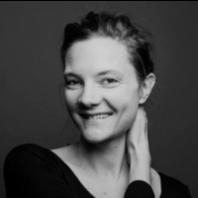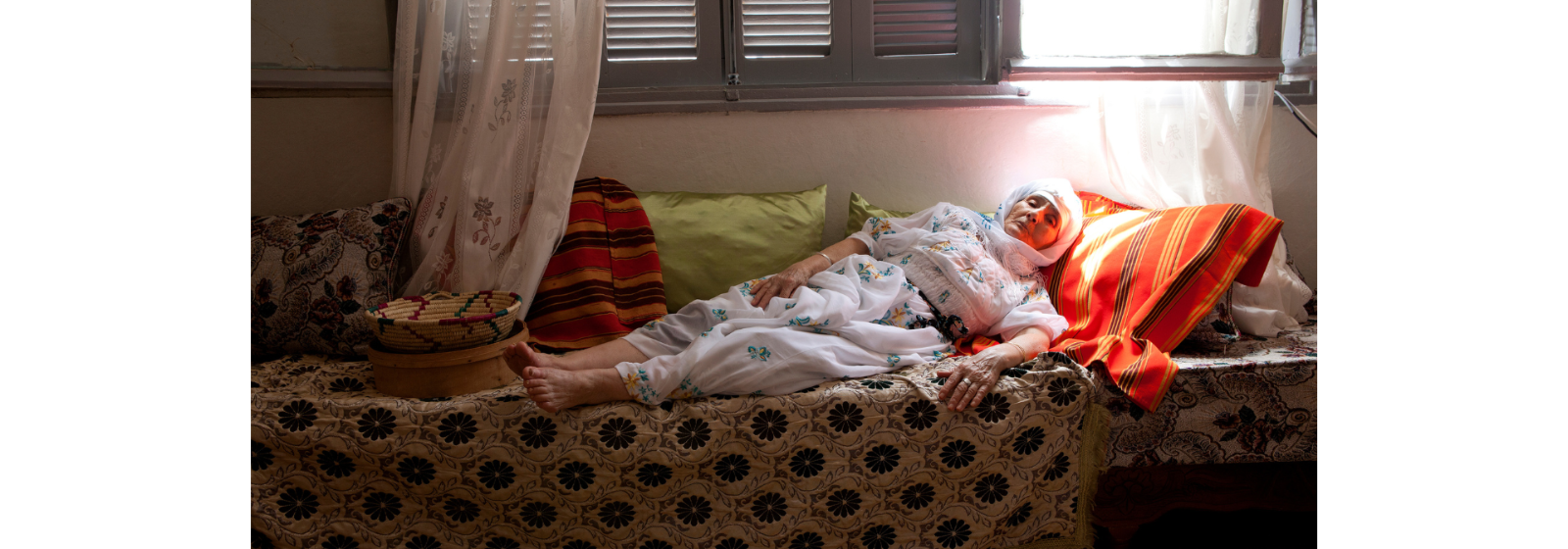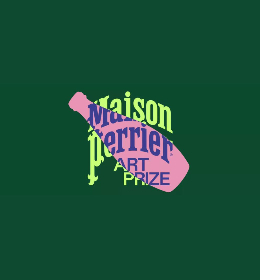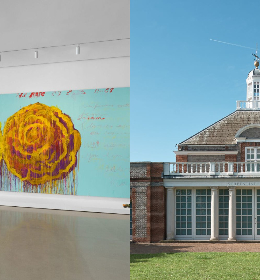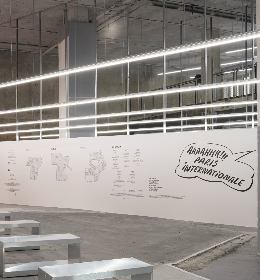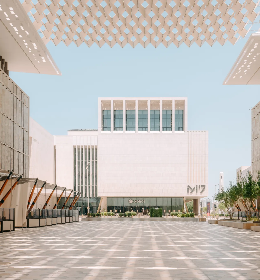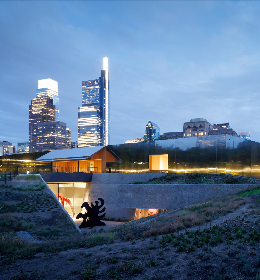"Algerie mon amour. Peintres de la fraternité algérienne" presents three generations of artists (Louis Nallard, the eldest, was born in 1918 and El Meya, the youngest artist was born in 1988): modern and contemporary artists, living or having lived in Algeria and those from the diaspora.
The collector and former gallery owner Claude Lemand is the curator of the exhibition, made richer by his exceptional donations to the Institute that he set up with his wife France since 2018. Claude Lemand began his collection of Algerian artists in 1987, thanks to his meeting with Abdallah Benanteur (1931-2017) who came to France in 1953 after studying at the Oran School of Fine Arts. The artist was responsible for about a thousand books of poems from all over the world, which he produced entirely, from the layout and choice of paper to the engraving of the illustrative plates. Being a bibliophile, Lemand bought some of these unique artists' books from him. Particularly, the IMA is presenting the book À Jamila Bouhired, a poem by the Iraqi Badr Shaker Al-Sayyab, illustrated by Benanteur in 2001. Jamila Bouhired is a heroic figure of the Algerian war of independence and a member of the FNL. Claude Lemand recalls Benanteur's words on the visceral attachment that binds Algerian artists to their motherland: "Algeria is inside me, only my feet have left it; my spirit is permanently prowling among my people".
Two notable events marked and shaped Algerian artists in the first half of the 20th century. The first was the discovery and dissemination of representations of the rock engravings and paintings of the Tassili N'Ajjer in the south-east of the Sahara desert, the oldest dating from 10,000 BC. The second landmark event was the publication in 1967 of the Aouchem (Tattoos) manifesto by artists claiming to be part of a multi-millennial and indigenous heritage. Among the artists who wrote the manifesto are Denis Martinez and Choukri Mesli, who are present in the exhibition. After independence was violently obtained in 1962, Algerian artists signified with Aouchem their total break with French and colonial influences: "It is a question of inserting the new Algerian reality into the universal humanism in formation in the second half of the 20th century."
1930s generation
The "1930s Generation", which included Algerian artists who had come to Paris for a time after the Second World War (Abdallah Benanteur, Abdelkader Guermaz, Mohammed Khadda, M'hamed Issiakhem, Choukri Mesli), returned to Algeria following its independence. Abstraction is predominant for most of them.
The exhibition focuses on some of its most important figures:
Baya (1931-1998) encountered success early. Taught by her adoptive mother between the years of 1944 through to 1946, she was sixteen years old when the eminent dealer and friend of poets Aimé Maeght organised her first solo exhibition in his gallery in Paris in 1947, discovered through the artist Jean Peyrissac. An issue of the gallery's magazine, Derrière le miroir, was devoted to him with a preface by André Breton and poems by Jacques Kober. Two years later, it was Picasso's turn to notice the ceramics she had made at the Madoura workshop. She also contributed illustrations to the magazine Soleil, founded by the poet Jean Sénac in 1950. After Independence, the director of the Algiers Museum of Fine Arts, Jean de Maisonseul, gave her lasting support. Her painted work is full of tender poetry where fantasy is nourished by a strong imagination with a taste for narration inspired by tales and legends exalted by an innate sense of colour.

Baya, The Yellow Curtains, 1947, gouache on paper, 72 x 91 cm. © Musée de l’IMA

Abdallah Benanteur, Le Hoggar, 1960,1960, oil on canvas, 100 x 200 cm. Donation Claude and France Lemand. IMA Museum.
Aouchem
Denis Martinez (born 1941) and Choukri Mesli (1931-2017), the two artists who founded the Aouchem group in 1967, embody the intermediate generation alongside Rachid Koraïchi.

Choukri Mesli, Les Protectrices, 1991, mixed media on cardboard, 110 x 74.5 cm. Donation Claude and France Lemand. IMA Museum
A new generation
With two photographs from her series "Mémoire dans l'oubli" (Memory in Oblivion), Halida Boughriet (born 1980) pays tribute to Algerian women, witnesses and actors in the Algerian war for independence, who are too often forgotten. By using a similar framing process for each of the photographs in the series, Boughriet insists on the physicality of her model, thus recalling Delacroix's fantasized view of Algerian women. Forgotten and anonymous, these women embody the resistance, the memory of the Algerian people.

Halida Boughriet, Mémoire dans l'oubli, 2010-2011, series of six photographs, Lambda print on Dibon, 120 x 180 cm. Claude and France Lemand Donation 2019. IMA Museum
Born in 1977, Zoulikha Bouabdellah grew up in Algiers before moving to France at the beginning of the black decade (1992-2000). A visual artist and video maker, she questions the place of women in patriarchal societies. In Le Sommeil (a tribute to Gustave Courbet), the artist paints the silhouettes of two naked women in slumber with red nail polish (a symbol of femininity and seduction), evoking Sapphic love. If at first glance, eroticism seems to dominate, the dripping of the varnish, its blood red colour echoes death, transgression.

Zoulikha Bouabdellah, Le Sommeil (Hommage à Gustave Courbet), 2016-2019, original drawing, red lacquer on eight papers, 160 x 280 cm. Claude and France Lemand Donation 2019. IMA Museum
The youngest of the group, El Meya, born in 1988, embodies the next generation of the contemporary Algerian scene. Her painting presented in the exhibition evokes the historical figure of Abdelkader, hero of the military campaign against France in Algeria in the mid-19th century. Deconstructing the heroic representation of a figure from Algerian history, the artist multiplies the representation of Abdelkader on the canvas. The four identical faces of the emir are seen from different angles. The central figure, on a white horse, is in the spirit of the history painting of the triumphant hero on the battlefield.

El Meya Benchikh El Fegoun, The White Horse, 2021, acrylic on canvas, 175 x 198 cm © Donation Claude and France Lemand 2021. IMA Museum
"Algeria my love. Artists of Algerian Brotherhood, 1953-2021" - Institut du monde arabe, until 31 July 2022
With works by Louis Nallard, Abdelkader Guermaz, M'hamed Issiakhem, Mohammed Khadda, Baya, Choukri Mesli, Abdallah Benanteur, Souhila Bel Bahar, Mohamed Aksouh, Denis Martinez, Mahjoub Ben Bella, Rachid Koraïchi, Mohand Amara, Abderrahmane Ould Mohand, Kamel Yahiaoui, Zoulikha Bouabdellah, Halida Boughriet and El Meya Benchikh El Fegoun.
As part of the Algerian season "Regards sur l'Algérie à l'IMA", in 2022-2023, the IMA will present three other exhibitions in parallel with "Algérie mon amour": "Raymond Depardon/Kamel Daoud. Son œil dans ma main. Algeria 1961-2019" until 17 July 2022; "Benanteur, le chant de la terre" from 13 September 2022 to 8 January 2023; "Baya. Women in their garden" from 8 November 2022 to 26 February 2023.



